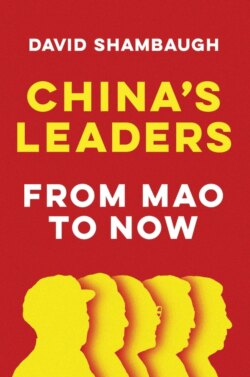Читать книгу China's Leaders - David Shambaugh - Страница 17
Institutional Imperatives
ОглавлениеThe former involves the institutional structures and policy processes that are unique to communist parties: the Central Committee and its departments, the Politburo and Politburo Standing Committee, Leading Small Groups (领导小组), Party committees (党委), Party groups (党组), and Party teams (党班子) that are embedded within the vast majority of institutions in society (factories, schools, neighborhoods, media, the military, all provinces, all cities, all counties, all villages, etc.). Leninist communist parties are like cellular organisms that permeate all elements of a society—they penetrate into the society and thereby control from the inside. The embedded institutional structure of the CCP is pervasive throughout China. China’s leaders must operate within this institutional framework. Among other manifestations this means that there are built-in mechanisms of constant surveillance among Party members and by the Party vis-à-vis all levels of government and throughout society.
Party congresses are held every five years (since 1982). In between, plenary sessions (or plenums) are held—usually once or twice per year. It is customary that each plenum focuses on a specific policy area (third plenums are about the economy, fourth plenums about the Party and ideology, fifth plenums usually about legal and administrative affairs, sixth plenums are about culture, and so on). While there is no fixed requirement, and it has fluctuated a great deal over time, the Politburo (政治局) usually convenes only for plenums, while the Politburo Standing Committee (政治局常委) usually meets once or twice per month. The state (government) structure is entirely separate (although also penetrated by the CCP at all levels). It includes the State Council and all of its ministries, commissions, bureaus, and agencies. It is headed by the Premier—who is also a senior leader, but not the preeminent one (technically the Chairman of the National People’s Congress outranks the Premier). Also on the government side is the state (PRC) President and Vice-President, but both are simply titles and do not come with attached institutions. The national judiciary is similarly a separate system (also referred to as the political-legal system, 政法系统) from the Party and government, but national leaders rarely interface with it. Finally, the preeminent leader is also normally Chairman of the Central Military Commission (CMC, 中央军委), a Party institution (although there has been a separate state CMC since 1982, with identical membership).
There has been fluctuation in these positions, their occupants, and their terms of occupation over time. The evolution of the five principal Chinese leaders of this study, as well as other top leaders, can be found in Table 1.1. With the exception of Hua Guofeng, prior to the 1990s those leaders who held these Party, military, and government positions were divided—but since Jiang Zemin’s tenure (1989–2002) China’s preeminent leader has held the trifecta of positions: CCP General Secretary, CMC Chairman, and PRC President. Only two leaders (Hua Guofeng and Zhao Ziyang) served both as CCP leader and State Council Premier (Hua simultaneously, Zhao consecutively), while “normally” the Premier has not held another position. Similarly, some served only as state President.
In China power does not always correlate directly with institutional positions. While the table below lists no fewer than eighteen individual leaders over the past seven decades, it is fair to say that only the five analyzed in this book have been the “paramount leader.” Some readers may question why I have not included Hua Guofeng, Hu Yaobang, and Zhao Ziyang as “paramount leaders” worthy of their own individual chapters. The reasons vary in each case. Hua Guofeng was certainly China’s preeminent leader following Mao’s death and the arrest of the Gang of Four in 1976, but his authority over the military was certainly constrained by Marshal Ye Jianying—and by mid-1977 Deng Xiaoping had returned to the senior leadership and immediately and progressively began to whittle away at Hua’s institutional positions and authority. By September 1990, Hua was stripped of the premiership in favor of one of Deng’s chosen disciples, Zhao Ziyang. Less than a year later, in June 1981, Deng himself seized the CMC chairmanship from Hua, while inserting his other disciple Hu Yaobang as CCP Chairman. Thus, Hua Guofeng’s tenure was really too short and too constrained to merit a separate chapter and consideration as one of China’s principal leaders. While there is a better case to make for Hu Yaobang and Zhao Ziyang, each of them very much operated under Deng’s preeminent status and each only possessed a single portfolio (and neither served as President or CMC Chairman). Hu and Zhao certainly played significant roles, and we will consider them in Chapter 3, but I do not feel that either merits inclusion among the principal leaders of the PRC.
Table 1.1: China’s Principal Leadership Positions and Leaders Since 1949
